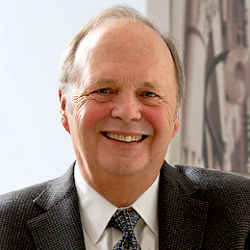
As a non-profit educational and scientific society in the computing field, ACM strives to deliver resources that advance computing as a science and a profession. Over the past decade, ACM has been enormously successful in doing so. With 109,000 members, ACM is now the world’s largest professional society in computing. Its conferences and journals are among the most highly regarded in the field. Its Digital Library is world class and a major resource for the computing community. Its leadership has had an impact on computing education, diversity, and public policy.
"The ecosystem that supports scholarly and professional societies is undergoing rapid change, creating significant challenges."
Like most professional societies, ACM has financed this work through three primary revenue streams: membership, conferences, and publications. ACM has been successful here also, enjoying a very solid financial base. Nevertheless, the ecosystem that supports scholarly and professional societies is undergoing rapid change, creating significant challenges. These challenges include: the need for an international presence; the expectation of quality services by its members and other stakeholders; membership retention and growth; adapting to rapid changes in online technology and content delivery; and accommodating new models of publication.
For ACM, we have been growing our international presence, but significant areas have yet to be addressed. While new services are being provided to members, it has been a challenge to keep pace with changes in technology (for example, mobile devices, video services, among many others). ACM membership is growing, but SIG membership has declined and hovers around 40% of ACM membership. The current role of conferences in computing research (a main SIG activity) is being questioned, and the open access movement is changing community expectations regarding how publications should be financed and distributed. At the same time, technology developments are leading to new visions of how researchers and professionals interact: social media, virtual conferences, and "open research" in which artifacts such as data and software are archived and exchanged. What seems to be emerging is a richly interconnected world, filled with services, where everything is expected to be free.
Given this picture, it is not clear that ACM’s traditional products and services, as well as the current models and means for financing them, will provide the necessary resources to address these looming challenges. As a result, senior ACM leaders and staff will be holding a two-day retreat this November to take a long, hard look at the association. At this retreat we will: unpack and understand ACM’s current business model(s); understand the challenges and forces at play for each model; assess the strengths/weaknesses of each model relative to emerging challenges and risks; and explore new thinking and new business models for the richly interconnected set of current and future ACM activities, programs, and products. The main goal of the retreat is to answer the question:
How must ACM restructure its portfolio, and the business models that support it, to stay relevant and viable in the future?
If you have thoughts on the future of ACM given the challenges we face, I would like to hear from you.



Join the Discussion (0)
Become a Member or Sign In to Post a Comment